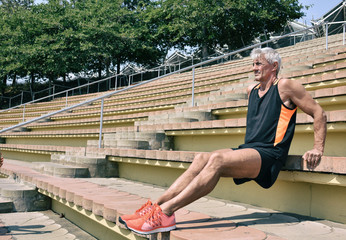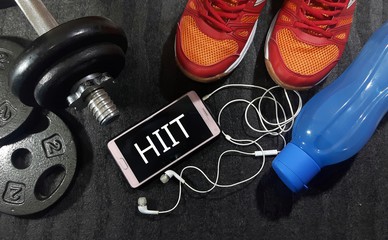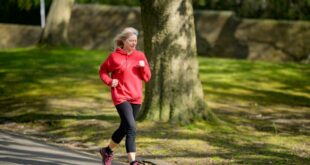 Whether you’re a couch potato, a fitness fanatic or an everyday plodder, recent research into anti-aging exercise will leave you (literally) gasping! And although it brings good news for those of us in our senior years, that doesn’t mean complying with it will be easy.
Whether you’re a couch potato, a fitness fanatic or an everyday plodder, recent research into anti-aging exercise will leave you (literally) gasping! And although it brings good news for those of us in our senior years, that doesn’t mean complying with it will be easy.
For decades, we’ve known that exercise is good for us. As we age, it becomes even more important as a way to help maintain balance, weight, muscle mass and even mental health (exercise is one of the best ways to stave off dementia). With this encouraging news, many of us embrace seniors’ gym classes, walking groups, golf, bowls, tennis, cycling, and more recently, electric bicycle riding. Not only does it all help us in our quest to keep on top of our health, but it’s also enjoyable. So what’s so unnerving about the latest research into anti-aging exercise?
Save our cells
From the world-renowned Mayo Clinic comes the discovery that, where aging is concerned, not all exercise is equal. Although the message we often hear from health professionals is to exercise gently, Mayo’s research tells us that short bursts of intense, fast-paced exercise (often referred to as HIT or ‘High Intensity Training’) is the way to ‘save our cells’. And it’s all to do with mitochondria.
 Mito – what?
Mito – what?
Mitochondria are the parts of our cells that turn what we eat into almost all of the energy that keeps us living. The bad news is that mitochondrial function decreases with age, but the good news is that this deterioration can be reversed with high intensity training.
Put to the test
To help it come to its conclusion, the Mayo Clinic put 72 adults ranging in age from 18 to 80 years through one of three 12 week exercise plans. One group undertook a HIT cycling regime, another undertook strength training with weights, and the third group focused on a combo of the two types of exercise.
Results saw all three groups increase their aerobic capacity. This means that oxygen flow throughout the individuals’ bodies was improved. Lean muscle capacity (the strength and powers of muscles) was also improved in all three groups. So far so good, but the big surprise is that while younger participants improved their mitochondrial capacity through the combined training plan, no one in the strength training plan managed to do this. Even more importantly, it was only those participants who were carrying out the HIT training whose mitochondria benefited most!
 Should you hit the HIIT?
Should you hit the HIIT?
So, should you add HIT training to your current exercise strategies? Certainly not before consulting your doctor to see if it’s safe for you to do so – and not before giving it serious thought because HIT training is anything but pleasant (at least for a start). In an exercise plan that means you’re eventually working out so hard you can’t manage to chat while you’re doing it, the old adage ‘no gain without pain’ applies several time over. But if you do want to give it a go, there are plenty of professionals who will be able to advise you. And just as with non-HIT exercise, there are several ways to achieve the workout you want.
Variety
From cycling and swimming to weightlifting and running, there’s a HIT plan to enthuse those who want to indulge. But one thing to remember is this: while regular exercise is often achievable on a daily basis, HIT training is not something you can do every day. Be prepared to work hard and fast, but also to take the recommended breaks. Should you decide to give this latest exercise plan a go, good luck – but in the meantime, keep up your current exercise routine because it will also be helping you maintain health.









Join the Discussion
Type out your comment here:
You must be logged in to post a comment.